Sarreguemines
Vintage Sarreguemines Creamer - Obernai - c1940s
Vintage Sarreguemines Creamer - Obernai - c1940s
Couldn't load pickup availability
Bring a piece of French history to your table with this charming Sarreguemines Obernai Creamer. Crafted in the early 20th century by the renowned Sarreguemines Faïencerie, this beautiful piece showcases a delightful country scene from the Alsace region, designed by Henri Loux. The warm hues of burnt orange and grey bring life to this pastoral illustration, making it a perfect blend of artistry and functionality.
Perfect for serving cream, milk, or sauces, this Terre de Fer creamer is both practical and collectible, with each side featuring a different picturesque scene. Whether you’re a collector of vintage French faïence or simply looking to add elegance to your kitchen, this creamer is a wonderful find.
- Material: Terre de Fer
- Pattern: Obernai
- Style: French Country Style
- Technique: Transferware
- Place of Origin: France
- Mark: Sarreguemines Obernai
- Date of Manufacture: Likely from a 1940s production run
- Condition: Mint condition with only the slightest signs of wear and tear
Dimension:
Height: 10 cm | 4 in
Circumference: 11 cm | 4.3 in
Share
- Worldwide Shipping
- Secure Packaging
- Loving Curation
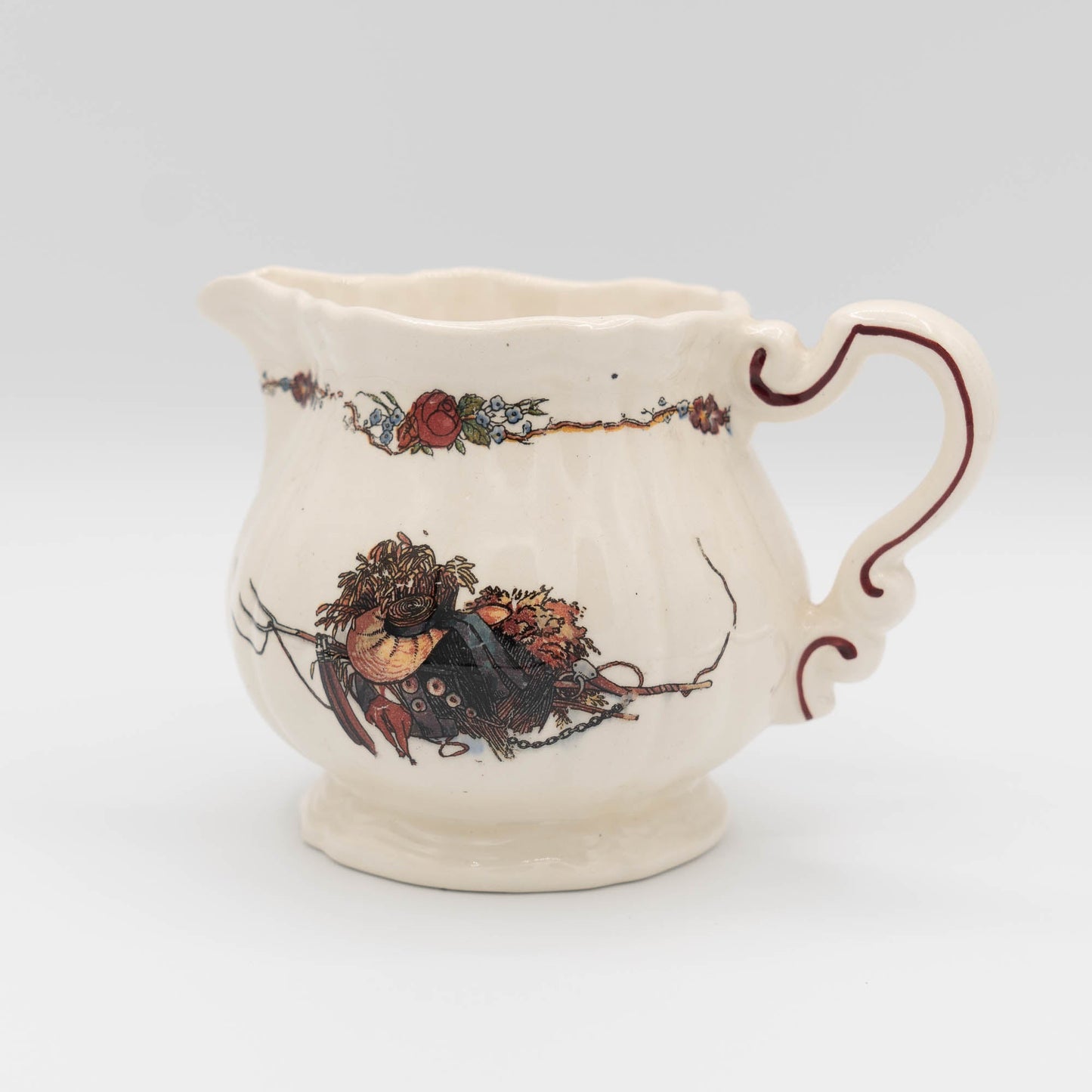
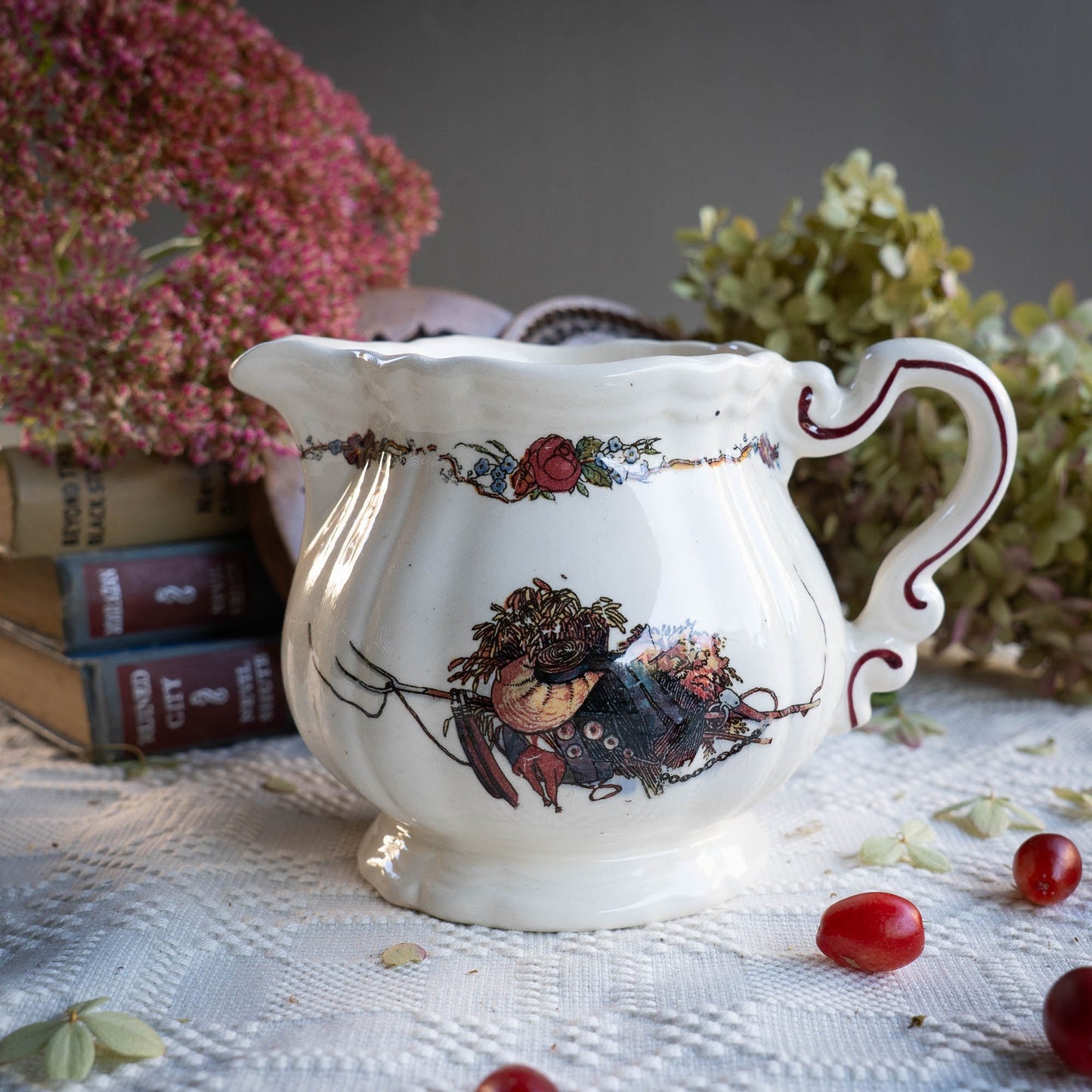
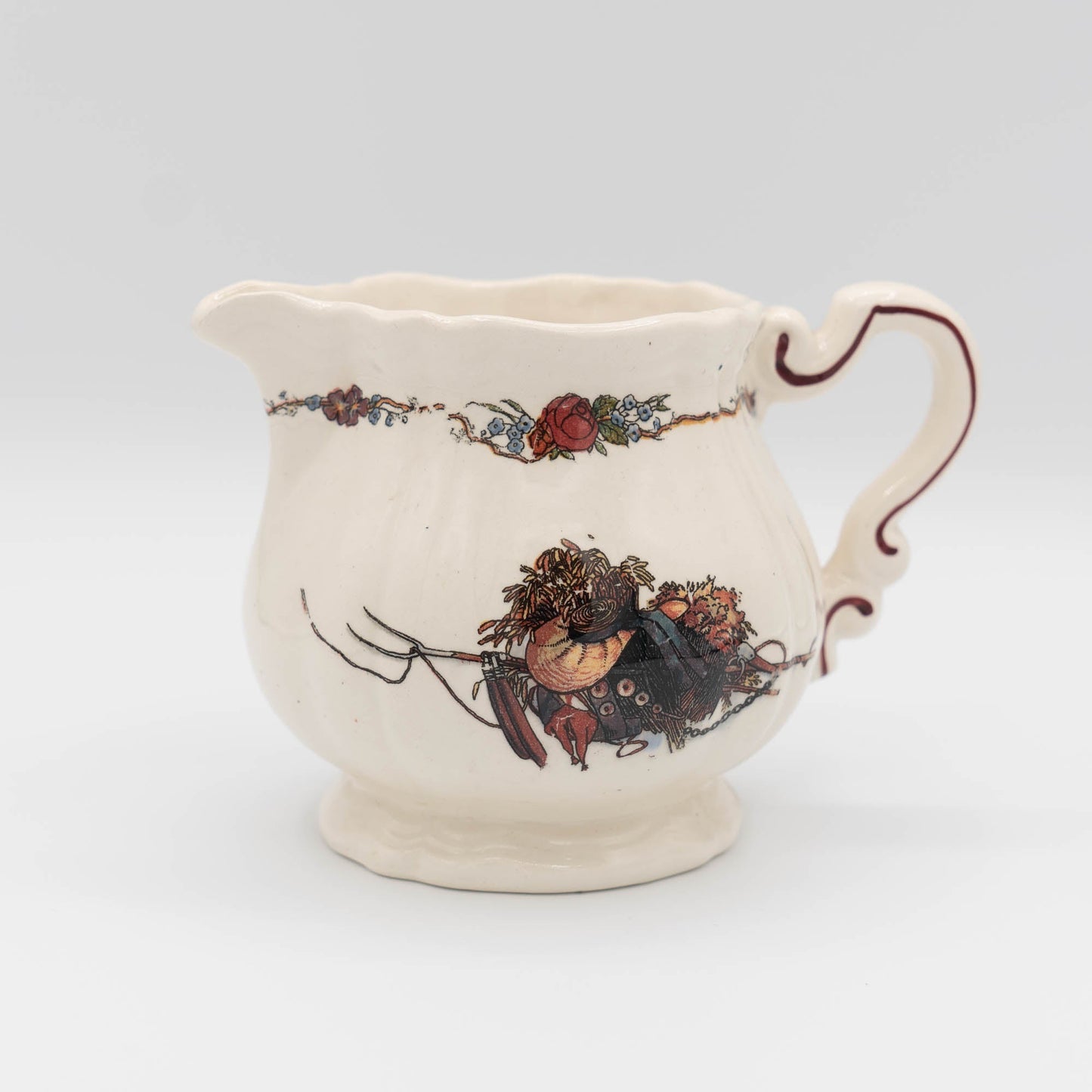
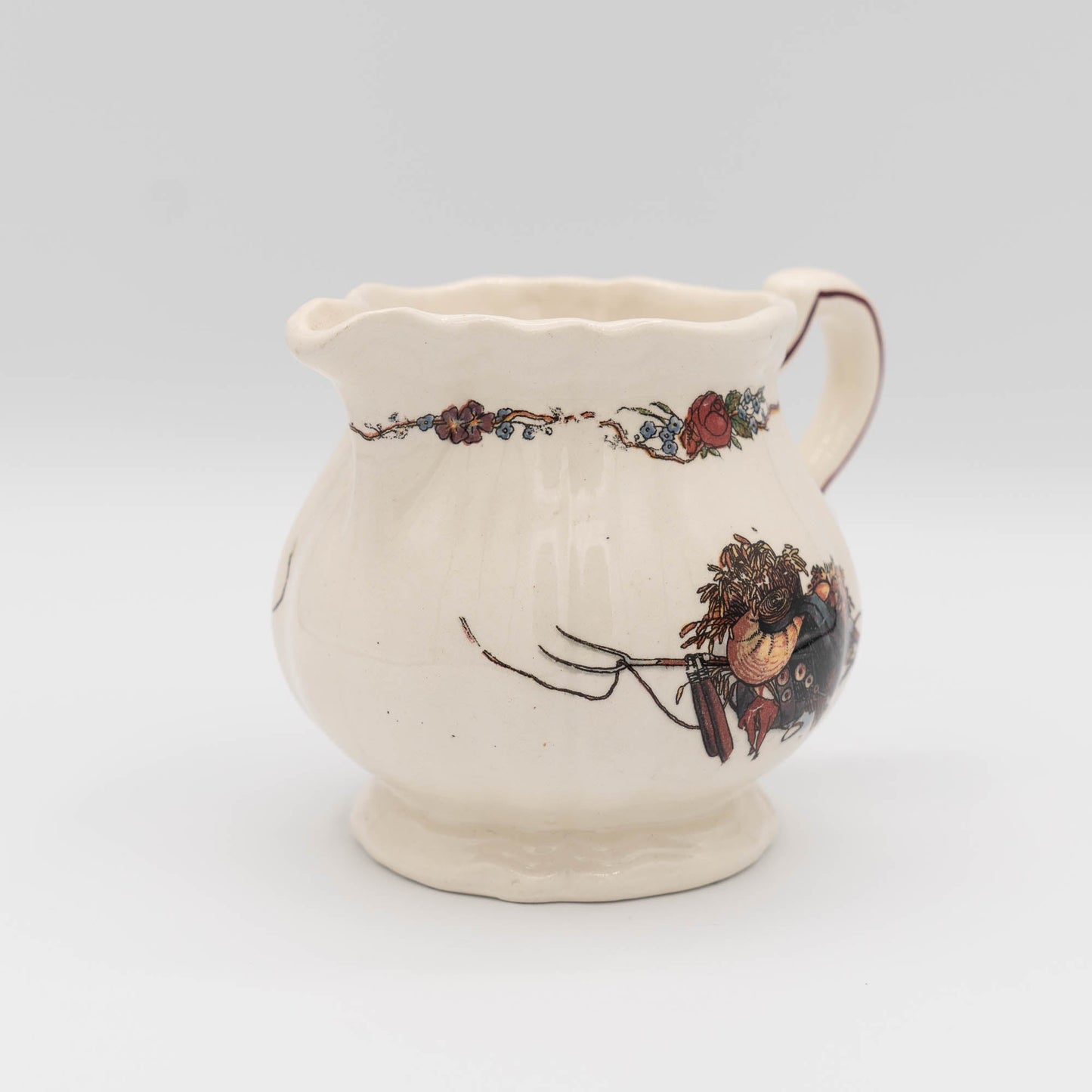
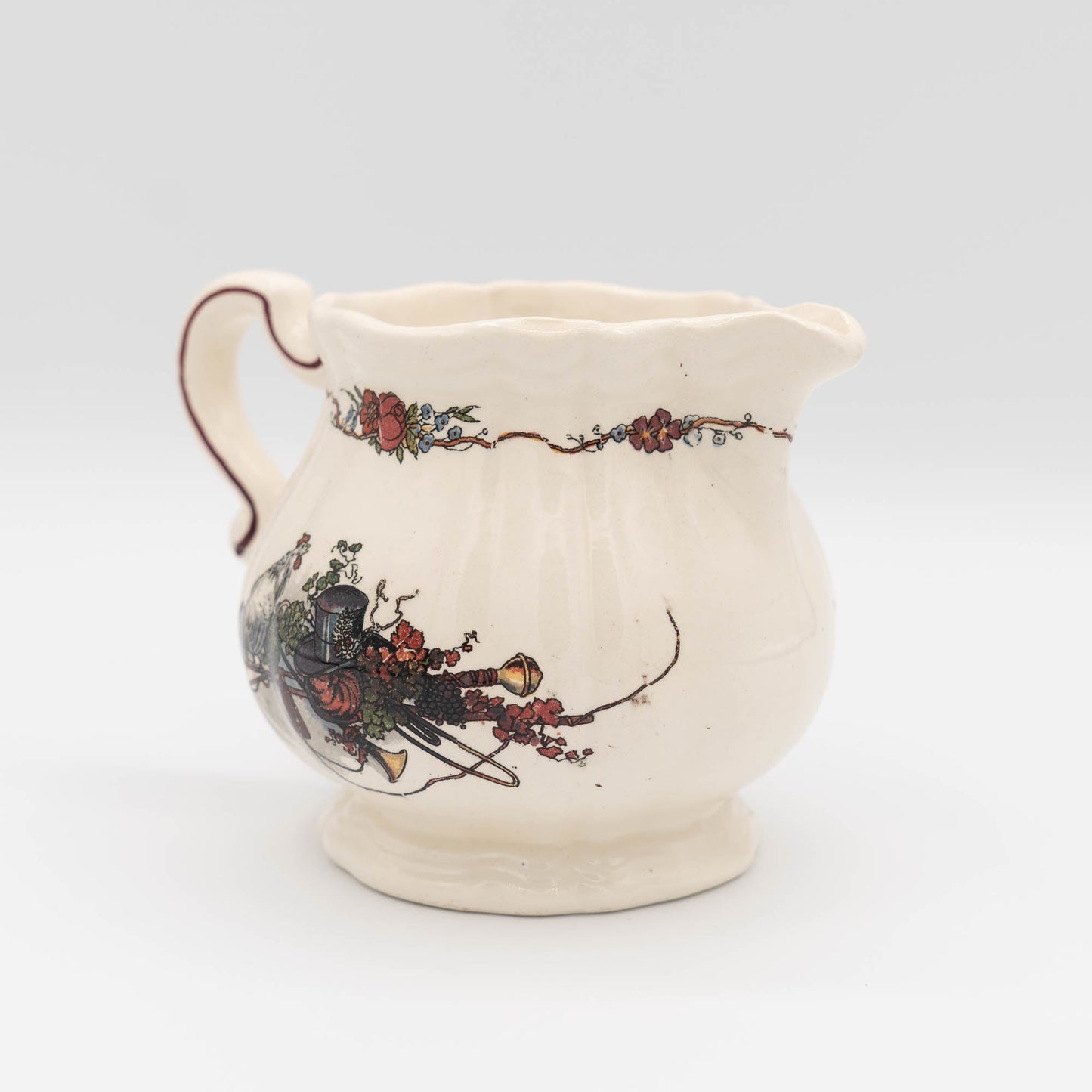
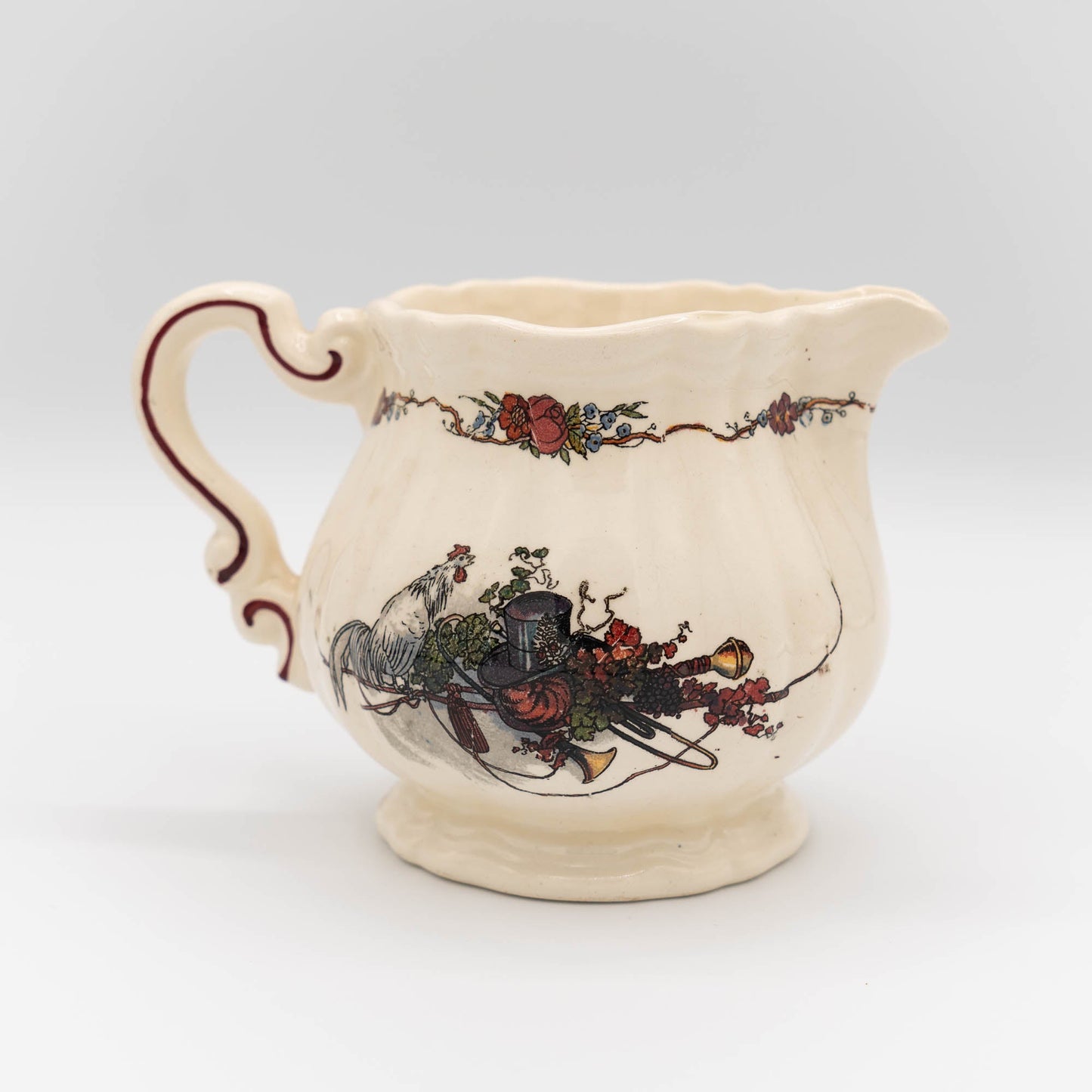
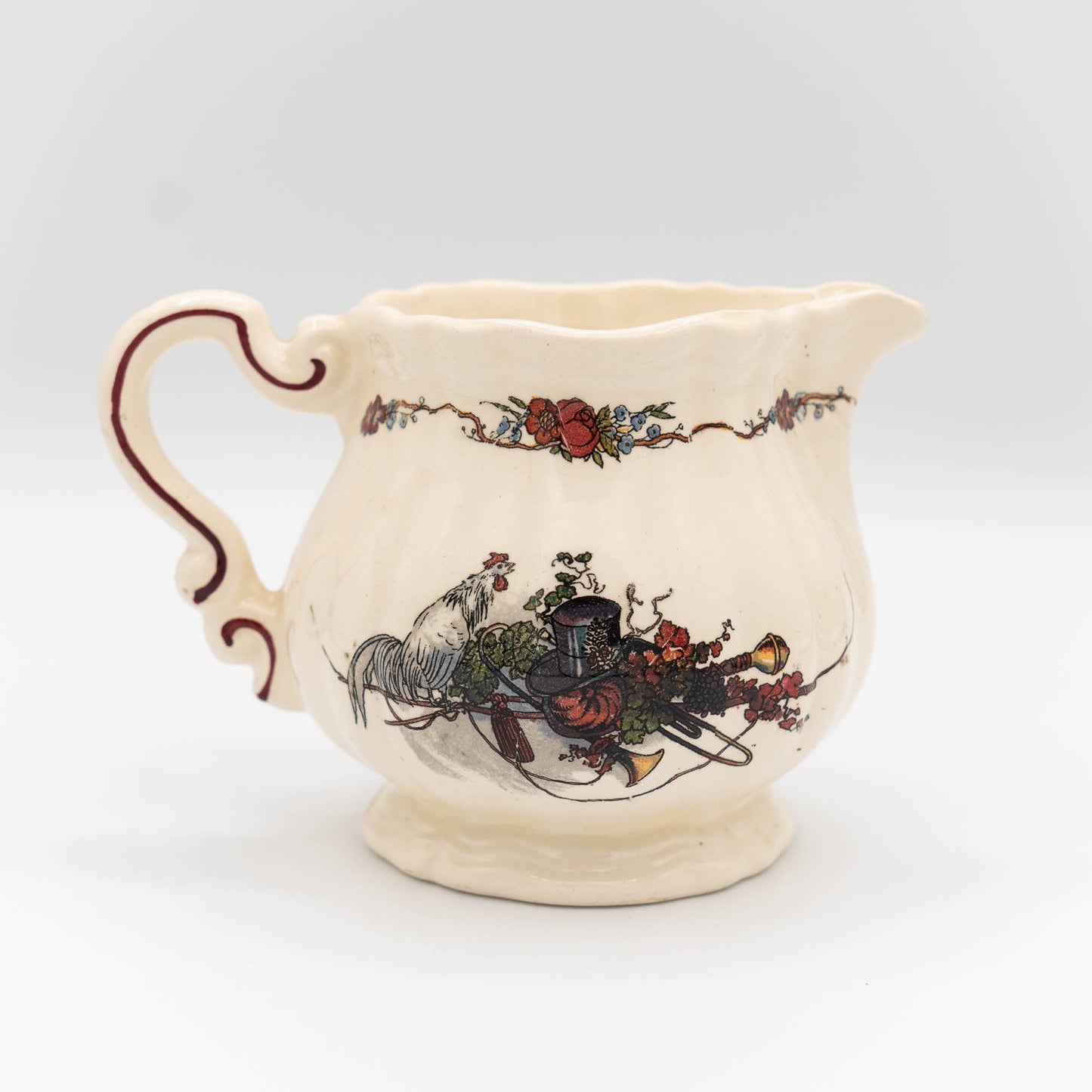
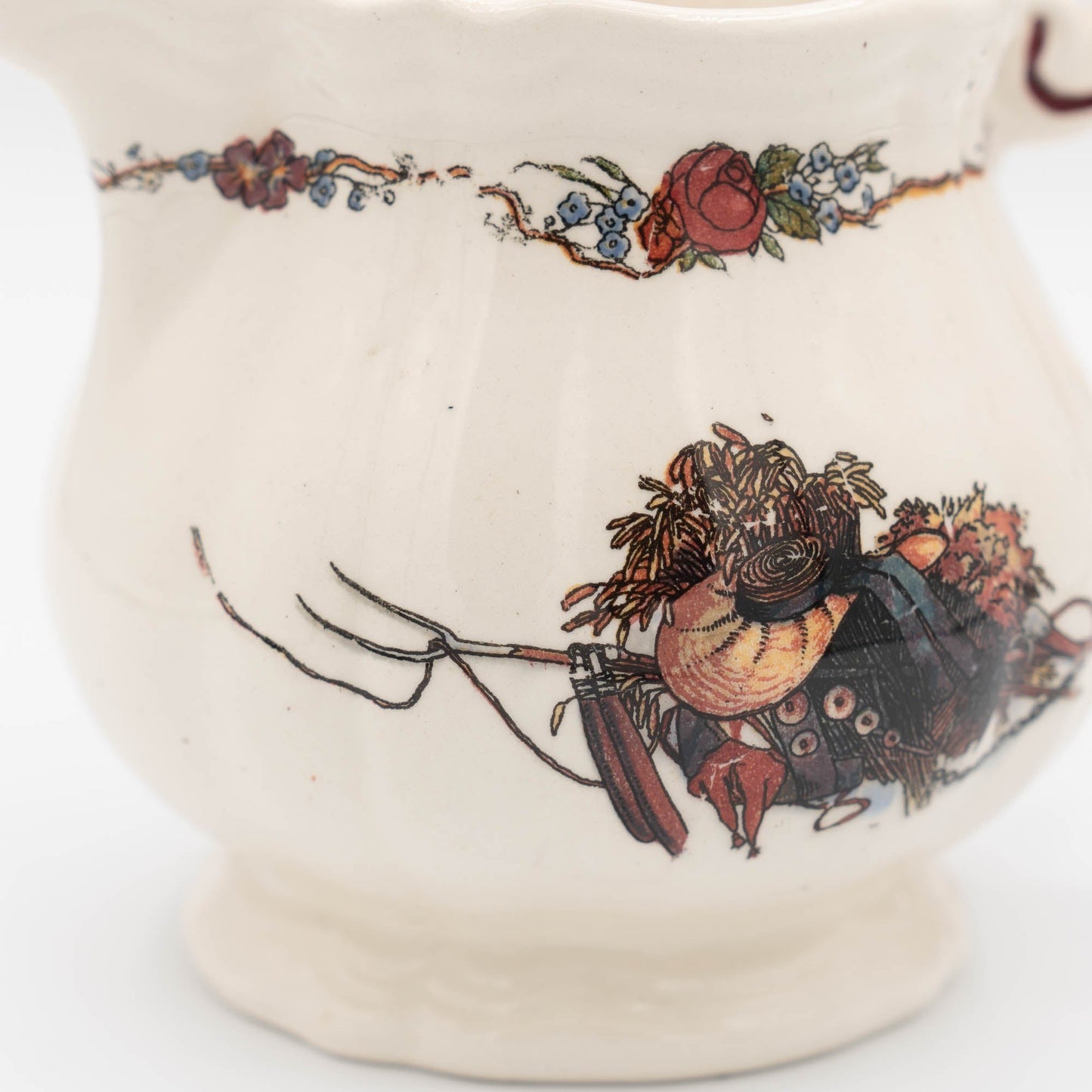
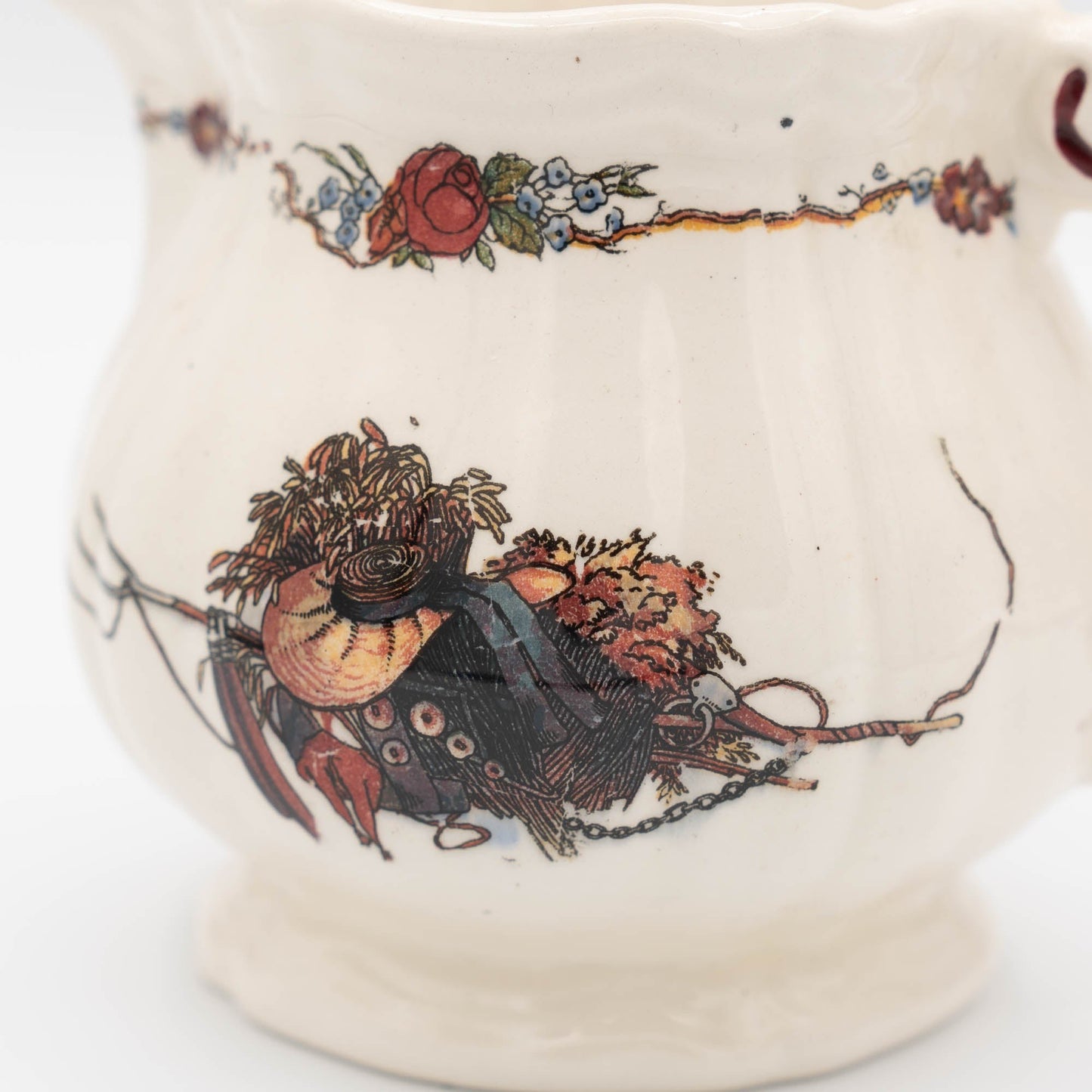
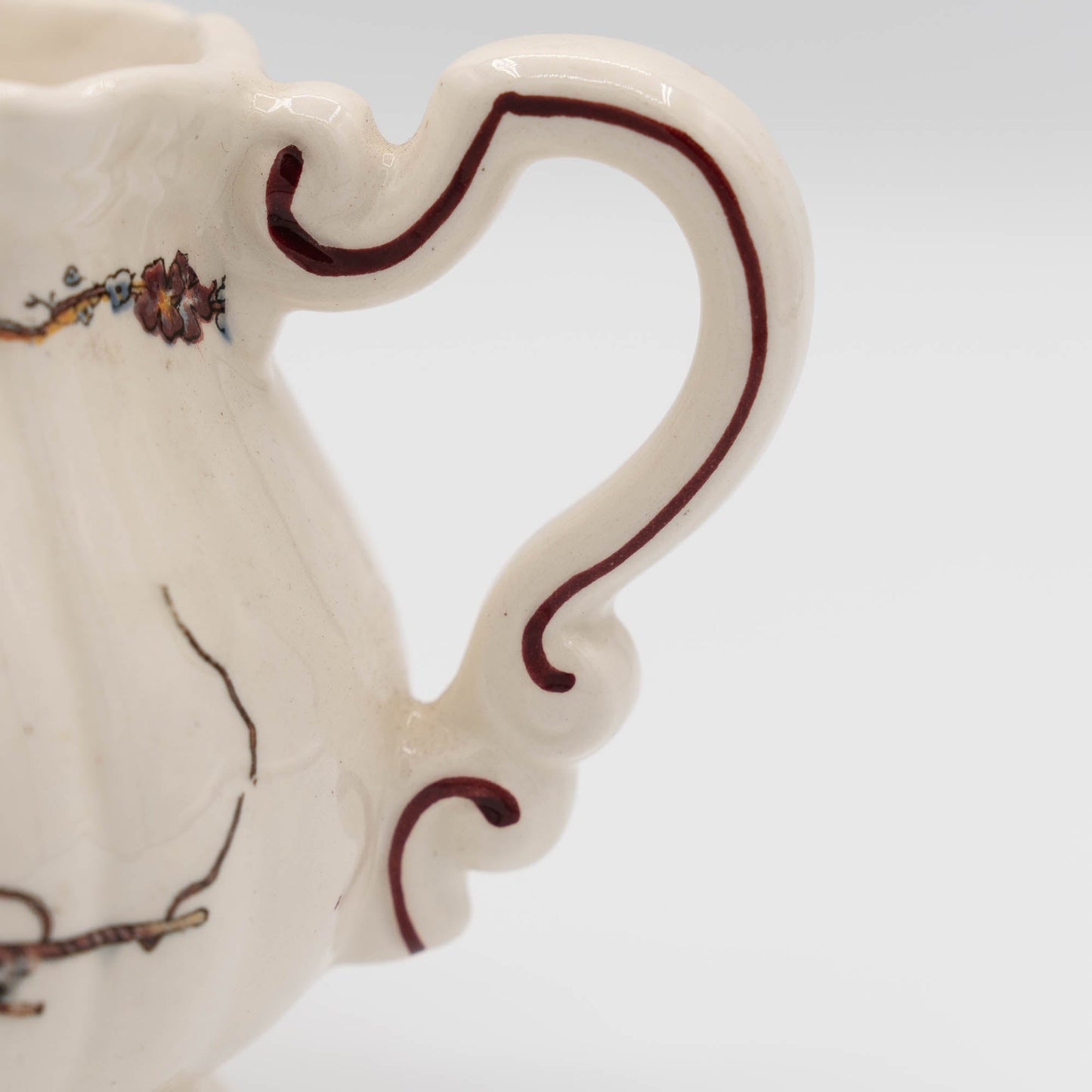
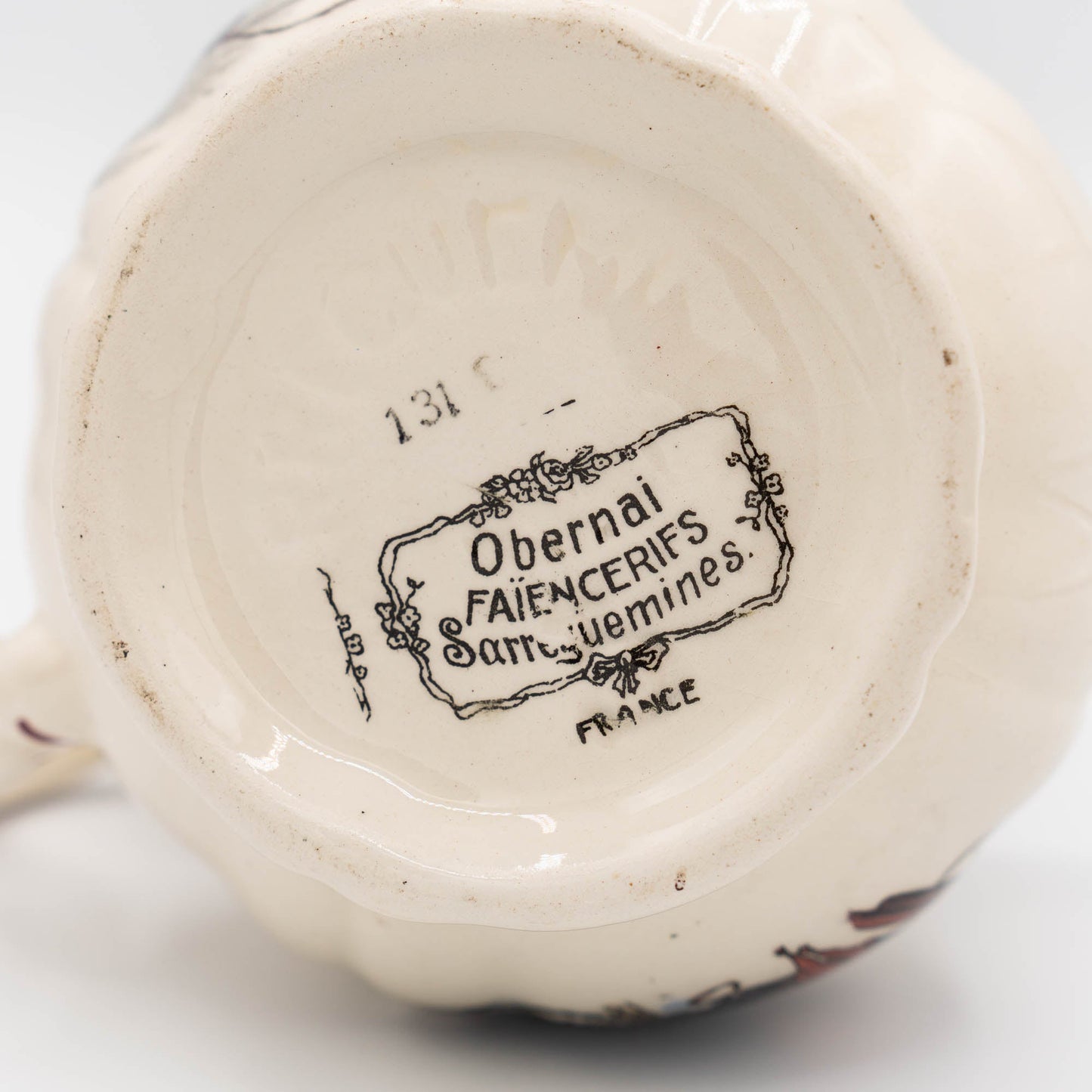
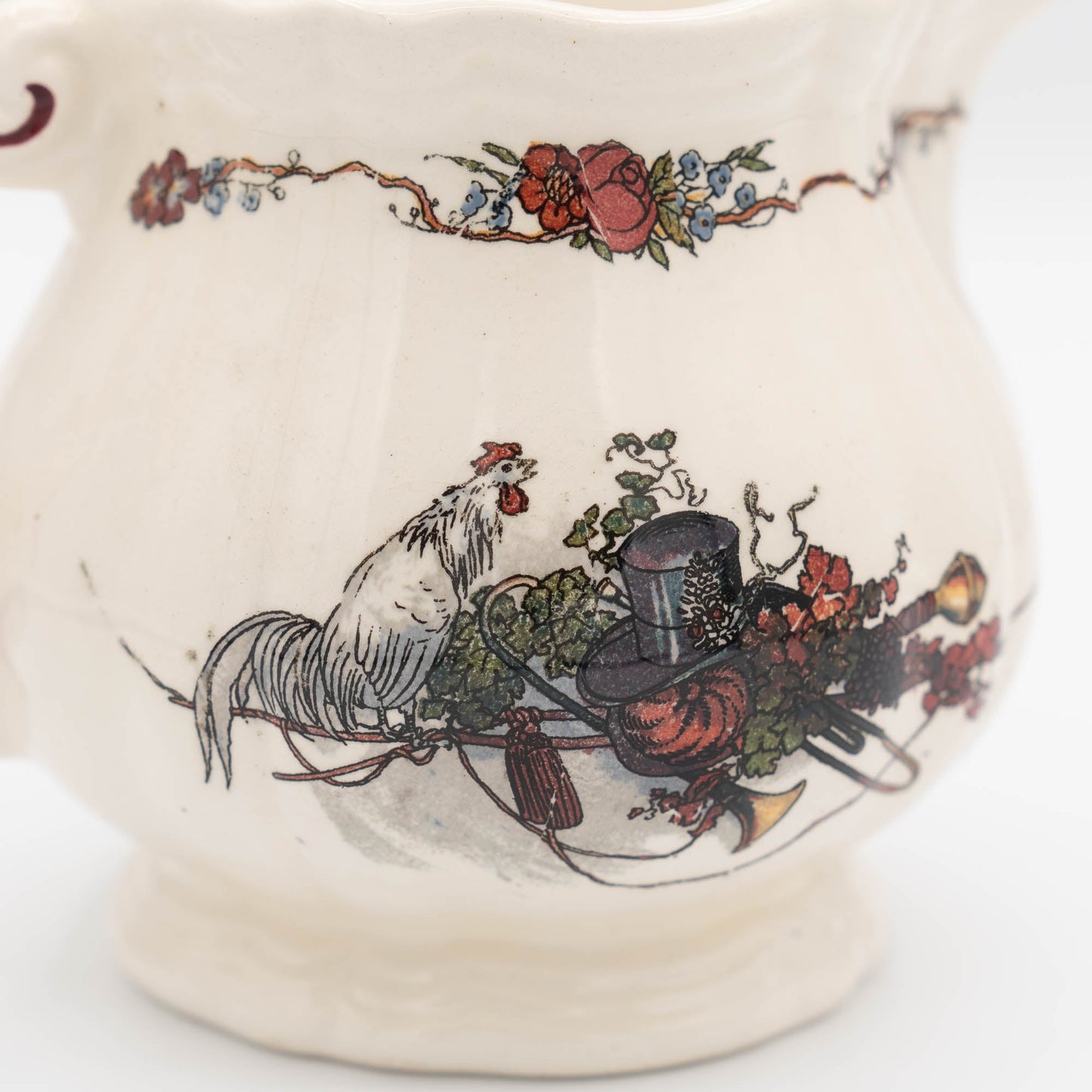
Origin & Maker
Sarreguemines is a renowned French faience company that has been producing beautiful ceramics since the late 18th century. Founded in 1790 in the town of Sarreguemines, near the French-German border, the company quickly gained a reputation for creating high-quality earthenware and faience pieces. By the 19th century, Sarreguemines had become one of France’s leading ceramics manufacturers, producing finely decorated tableware, tiles, and decorative items.
Sarreguemines gained international recognition when they showcased their work at the Exposition Universelle in Paris in 1867, a world fair that celebrated industrial and artistic achievements. This exposure helped solidify the company's reputation for innovation and craftsmanship, with their decorative faience pieces becoming highly sought after across Europe.
The company is best known for its intricate Majolica designs, vibrant glazes, and detailed hand-painting. Sarreguemines continued to flourish through the 19th and early 20th centuries, producing everything from rustic faience to elegant Art Nouveau ceramics. Today, pieces from Sarreguemines are cherished by collectors for their rich history and exquisite craftsmanship, embodying the artistry of French faience.
Blog posts
View all-

A Serendipitous Morning at the Rue de Bretagne ...
There are few joys in life that match the thrill of stumbling upon a hidden treasure, and for me, flea markets hold that magical allure. One of my favourite flea...
A Serendipitous Morning at the Rue de Bretagne ...
There are few joys in life that match the thrill of stumbling upon a hidden treasure, and for me, flea markets hold that magical allure. One of my favourite flea...
-

Emile Bourgeois and "Le Grand Dépôt" in Paris
Recently, I found this stunning Sarreguemines wash set. It was at the Brocante in Belfort, France. On this day, we had got up at 4 AM to be there in...
Emile Bourgeois and "Le Grand Dépôt" in Paris
Recently, I found this stunning Sarreguemines wash set. It was at the Brocante in Belfort, France. On this day, we had got up at 4 AM to be there in...
-

The Legacy of Robert Haviland: A Journey from N...
The story of Robert Haviland porcelain is one of artistry, transatlantic ambition, and enduring heritage. It begins in the mid-19th century when David Haviland, an enterprising New Yorker, founded Haviland...
The Legacy of Robert Haviland: A Journey from N...
The story of Robert Haviland porcelain is one of artistry, transatlantic ambition, and enduring heritage. It begins in the mid-19th century when David Haviland, an enterprising New Yorker, founded Haviland...















